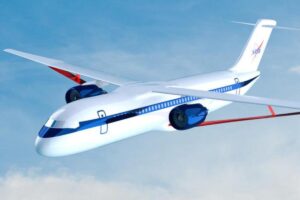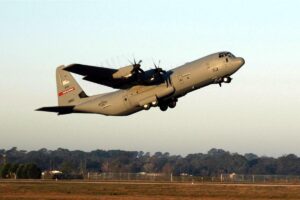ARINC-429 to SYNCHRO Enabling Data Translation in Avionics
Executive Summary
Modern avionics systems rely on seamless communication between various subsystems. However, the diversity of legacy and modern protocols presents a challenge to system integrators striving for interoperability and efficiency. One prominent interface, ARINC-429, serves as a key digital communication protocol, while SYNCHRO represents an analog format still widely used for precision angular data representation. Bridging these two formats through ARINC-429 to SYNCHRO converters is crucial in sustaining compatibility across mixed-platform avionics environments.
This white paper examines the technical and operational necessity of ARINC-429 to SYNCHRO converters, exploring their role in mission-critical systems, implementation challenges, and technological advancements. It delves into design principles, signal translation methodologies, case studies, and compliance standards, offering avionics engineers and systems integrators a comprehensive guide to effective data translation between these two essential avionics protocols.
Introduction to ARINC-429 and SYNCHRO
ARINC-429 Overview
ARINC-429 is a point-to-point data bus protocol developed by Aeronautical Radio Inc. for commercial and transport aircraft. It is characterized by unidirectional data flow using a single transmitter and multiple receivers. Operating on a twisted-pair cable, it transmits 32-bit words encoded in binary with a standardized message structure including a label, source/destination identifier (SDI), data field, and parity bit. Its simplicity, reliability, and self-clocking nature make it widely used in avionics for transmitting discrete and analog data in digital form.
SYNCHRO Systems Overview
SYNCHRO systems, developed in the mid-20th century, are analog devices used to transmit angular position information through electrical signals. Commonly found in aircraft, ships, and military applications, SYNCHROs function by transmitting a voltage proportional to shaft rotation. Their output consists of three-phase signals representing sine and cosine components of rotational angles, used by indicators, servos, and control systems requiring high-precision angular data.
Importance of Interfacing the Two
As aircraft integrate digital systems while retaining analog components like synchros, converters become critical to maintain data integrity and synchronization across systems. ARINC-429 to SYNCHRO converters enable digital avionics systems to control or interact with analog components like mechanical indicators, flight control surfaces, or navigation systems. These converters not only enhance interoperability but also extend the operational life of legacy equipment, ensuring efficient modernization without full replacement.
The Need for ARINC-429 to SYNCHRO Conversion
Mixed-Protocol Environments
Aircraft platforms, especially in defense and commercial transport sectors, frequently use a combination of digital and analog systems. For example, modern flight management systems may output ARINC-429 messages, while existing cockpit instruments or flight control actuators still operate on synchro signals. Without an effective conversion mechanism, the systems cannot communicate, potentially compromising functionality or requiring costly equipment overhauls.
Cost-Efficiency of Legacy Equipment Integration
Retrofitting or replacing synchro-based instruments with fully digital counterparts is expensive and time-consuming. ARINC-429 to SYNCHRO converters offer a cost-effective alternative, facilitating integration of new digital systems with existing hardware. This approach minimizes certification requirements, reduces downtime, and preserves the familiarity and reliability of legacy instruments.
Mission-Critical Applications
In military aircraft and special mission platforms, synchros remain indispensable due to their robustness in harsh environments. Functions such as turret positioning, radar antenna control, and analog cockpit indicators rely on synchro-based feedback. Conversion systems are necessary to ensure these components receive accurate command and control signals derived from ARINC-429 messages.
Technical Architecture of ARINC-429 to SYNCHRO Converters
System Block Diagram
A typical ARINC-429 to SYNCHRO converter includes the following components:
-
ARINC-429 Receiver: Captures and decodes incoming ARINC-429 messages.
-
Data Decoder/Processor: Extracts relevant data fields and applies mathematical transformations to convert digital angles to analog equivalents.
-
Digital-to-Analog Converter (DAC): Converts digital data to corresponding voltage signals.
-
SYNCHRO Signal Generator: Synthesizes three-phase analog outputs proportional to the decoded angle.
-
Power Supply & Conditioning Circuitry: Ensures electrical stability and fault protection.
Key Design Requirements
-
Accuracy: Converters must maintain high angular resolution (often within ±0.1°).
-
Real-Time Performance: Latency must be minimal to support synchronous control functions.
-
Electrical Isolation: Necessary to prevent ground loops and EMI issues.
-
Robustness: Devices must comply with environmental standards like DO-160 and MIL-STD-810.
-
Fail-Safe Operation: Built-in redundancy and diagnostics improve operational integrity.
Conversion Workflow
-
The ARINC-429 receiver detects incoming data at 12.5 or 100 kbps.
-
Messages are parsed based on label identifiers.
-
Angular data is extracted, scaled, and offset-adjusted.
-
Digital data is passed through a DAC to generate voltage outputs.
-
A resolver or synchro excitation stage creates a three-phase analog signal corresponding to the desired angle.
Implementation Considerations
Signal Integrity and Noise Mitigation
Because ARINC-429 is digital and SYNCHRO is analog, careful attention must be paid to signal integrity, especially during the DAC process. Shielded cables, ground planes, and proper PCB layout reduce EMI. Active filters help smooth DAC output for stable synchro signal generation.
Synchronization and Calibration
To ensure precise angular correspondence, converters must undergo calibration using test equipment such as synchro standards or rotary position simulators. Synchronization between data updates and signal generation cycles is essential to prevent jitter or data mismatch.
Handling Multiple Labels
Converters may support multiple ARINC-429 labels, each corresponding to different functions or instruments. Programmable label mapping allows flexible deployment across aircraft types, reducing inventory complexity and increasing modularity.
Electrical Load Management
SYNCHRO devices impose electrical loads on the source. The converter must provide sufficient drive capability, typically around 26 V line-to-line at 400 Hz. Transformer-coupled outputs and overcurrent protection are often employed.
Applications in Avionics Systems
Flight Deck Instrumentation
ARINC-429 to SYNCHRO converters are used to drive legacy cockpit gauges from digital flight control computers. Examples include:
-
Compass systems
-
Artificial horizons
-
Vertical speed indicators
-
Turn and bank indicators
By accepting digital attitude or heading data, converters ensure traditional mechanical instruments reflect real-time navigation parameters.
Navigation and Radar Systems
Rotating antennas for TACAN, weather radar, or surveillance systems often rely on synchros for position feedback. ARINC-429 interfaces from modern control systems must be converted to synchro signals for precise pointing accuracy.
Mechanical Control Surfaces
In military applications, synchro-based servo motors are used for control surfaces like flaps or rudders. Converters enable digital fly-by-wire systems to control these components without extensive rewiring or actuator replacement.
Training and Simulation
Flight simulators emulate real aircraft behavior using physical instruments driven by digital models. ARINC-429 to SYNCHRO converters bridge the software simulation with analog outputs for realism and compatibility with legacy trainer systems.
Standards and Compliance
ARINC 429 Compliance
Converters must conform to the ARINC 429 protocol specification:
-
Word format: 32-bit data with label, SDI, data, SSM, and parity
-
Data rates: Low speed (12.5 kbps) and high speed (100 kbps)
-
Encoding: Bipolar Return-to-Zero (BPRZ)
Converters typically support multiple channels and programmable label filtering.
SYNCHRO Standards
Standard synchro signal parameters include:
-
3-wire output
-
11.8V or 26V line-to-line signal amplitude
-
400 Hz excitation frequency
-
±90° to 0–360° angular range
Converters must match these electrical and signal parameters for proper operation.
Environmental and EMI Compliance
ARINC-429 to SYNCHRO converters deployed in aircraft must meet environmental and EMC standards:
-
DO-160G: Environmental conditions for airborne equipment
-
MIL-STD-461: EMI/EMC control for military systems
-
RTCA DO-254: Design assurance for airborne electronic hardware
Compliance ensures the converter operates reliably in real-world conditions and does not interfere with adjacent systems.
Design Challenges and Solutions
Challenge: Real-Time Angle Conversion
Solution: Use high-speed microcontrollers or FPGAs to minimize processing latency. Implement pipelined processing and phase-locked loop synchronization to DAC updates.
Challenge: Thermal Management
Solution: Use efficient power stages and low-dropout regulators. Heat sinks and conduction cooling improve thermal dissipation in confined avionics bays.
Challenge: Multi-Device Coordination
Solution: Implement ARINC-429 label prioritization, message timestamping, and buffering to ensure synchro outputs stay consistent even under burst traffic conditions.
Challenge: Ruggedization
Solution: Conformal coating, vibration isolation mounts, and IP-rated enclosures protect converters from environmental stresses in military and commercial platforms.
Case Study: Retrofit of Military Aircraft Navigation Systems
Background
A defense contractor was tasked with modernizing the navigation system of a fleet of maritime patrol aircraft. The existing system relied on synchro-driven indicators, while the upgraded inertial navigation system (INS) outputted heading data over ARINC-429.
Implementation
An ARINC-429 to SYNCHRO converter was integrated between the new INS and the legacy cockpit instruments. The converter decoded the digital heading data and drove the synchro gauges with high accuracy.
Outcome
The retrofit preserved existing indicator hardware, reduced integration time, and passed rigorous military qualification testing. It also allowed pilots to retain familiar interfaces while benefiting from enhanced digital precision.
Future Trends in ARINC-429 to SYNCHRO Conversion
Integration with Modern Data Buses
As aircraft adopt ARINC-664 (AFDX), CAN Aerospace, and MIL-STD-1553, future converters may support multi-protocol input, expanding interoperability beyond ARINC-429.
Software-Defined Converters
Field-programmable hardware allows converters to adapt to new label sets, synchro ranges, or voltage levels through software updates, improving lifecycle support.
Embedded Health Monitoring
Advanced converters are being designed with self-diagnostics, built-in test (BIT), and health status outputs via ARINC or discrete lines for predictive maintenance.
Miniaturization and SWaP-C Optimization
Smaller form factors, lower weight, and reduced cost are being prioritized for UAVs, air taxis, and space-constrained applications. System-on-Chip (SoC) architectures are enabling compact, efficient converter modules.
Conclusion
ARINC-429 to SYNCHRO converters play a pivotal role in bridging digital and analog avionics systems, ensuring seamless communication and functional continuity. As platforms increasingly blend legacy and modern subsystems, these converters offer a cost-effective, reliable, and standards-compliant solution for maintaining interoperability. From cockpit instrumentation to navigation control, they are essential to preserving mission effectiveness while enabling technological evolution.
With advances in signal processing, programmable logic, and rugged design, ARINC-429 to SYNCHRO converters are poised to remain a critical element of avionics architecture. Their continued development supports the aerospace industry’s goals of safety, reliability, and long-term system support.





